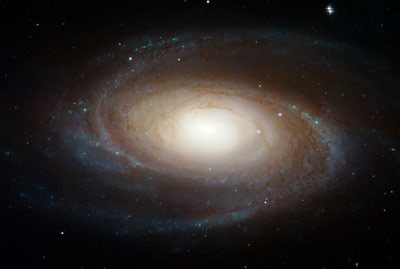SQK Cosmology
(courtesy of NASA, ESA, and the Hubble Heritage Team)
Subquantum Kinetics leads to a stationary universe cosmology, in which the cosmological redshift is predicted to arise from a “tired-light” effect
Evidence Against the Expanding Universe Hypothesis
Edwin Hubble did not favor the expanding universe hypothesis
Modern cosmologists and astronomy historians are misguided in attributing the expanding universe hypothesis to the twentieth century astronomer Edwin Hubble. For, in his writings Hubble consistently doubted the Doppler shift interpretation, always referring to the galaxy redshifts as "apparent velocities." Hubble, in fact, favored the tired-light interpretation, the proposal that photons lose energy as they travel through interstellar space, finding that it offered a more reasonable interpretation of the observational data. However, he realized that to adopt this interpretation would require admitting that it was due to "some hitherto unrecognized principle in physics." Indeed, one interpretation of the tired-light theory, which suggests that the lost energy disappears entirely from the physical universe, directly conflicts with the strict interpretation of the First Law of Thermodynamics. Although the law of energy conservation has been verified at the macroscopic level, e.g., in the operation of refrigerators and such, it has not been proven to apply to very small effects such as might explain the cosmological redshift (energy losses of the order of 10-18 per second). Nevertheless there are many physicists and astrophysicists whose feathers would be ruffled at the idea that the Law might not hold true even at such miniscule levels.
Vincent Sauvé presents an excellent historical review of Hubble's writings and his stance against wholesale acceptance of the expanding universe hypothesis. He also challenges some big bang assertions.
Also, in chapter 13 of his book Genesis of the Cosmos, Paul LaViolette presents an historical overview of the discovery of the galaxy redshifts during the early 20th century and how astronomers misled themselves to follow the Doppler shift interpretation which led to the conclusion of an expanding universe.


